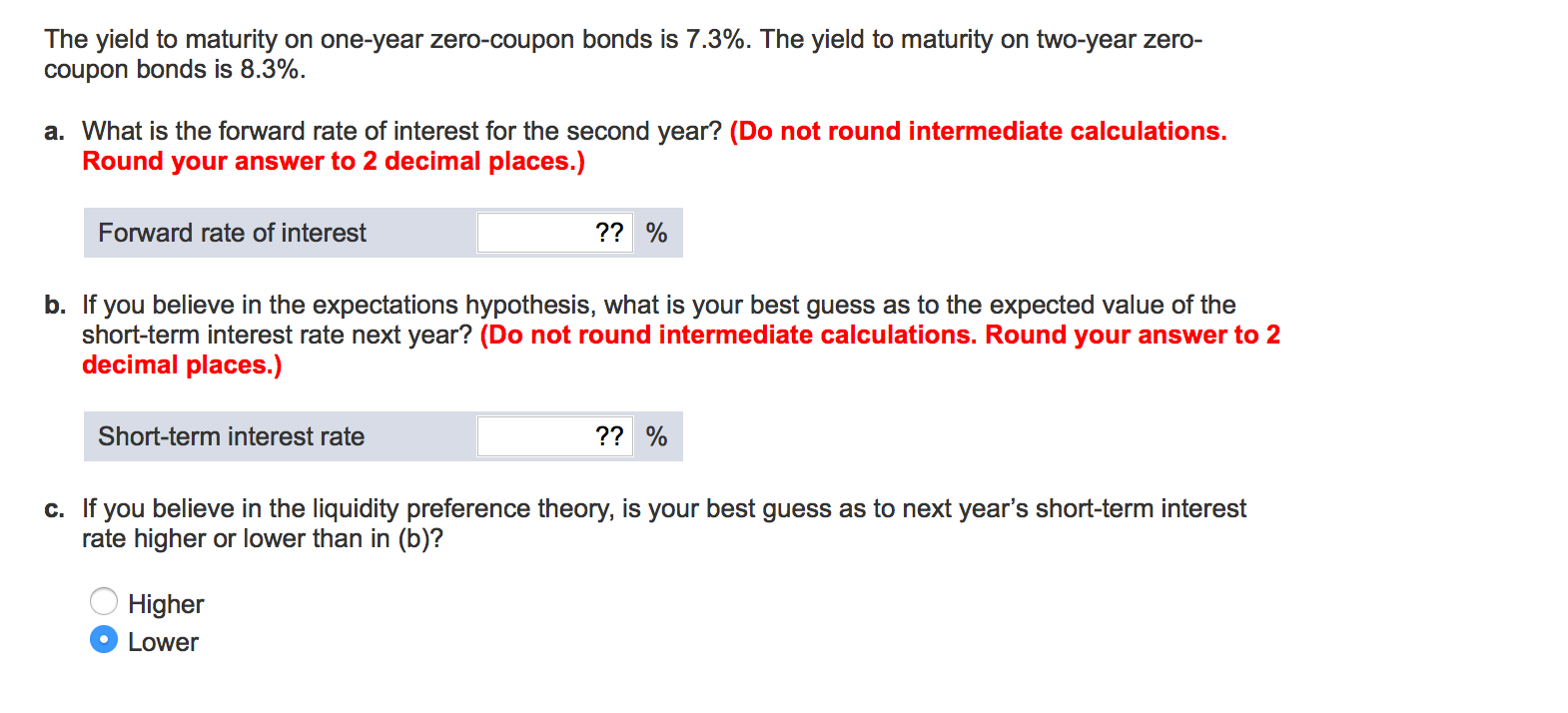Coupon bond interest rate calculator
Contents:
Advanced Bond Concepts: Yield and Bond Pricing
This formula gives accurate results as long as you pay par value for the bond. The modified current yield formula takes into account the discount or premium at which you buy the bond, and is calculated as:.
Tips Economic factors can affect a bond's value. Not Helpful 0 Helpful Like any loaned money, a bond entitles you to receive interest payments at fixed intervals for a specific time frame, at the end of which you will receive your initial amount back. Step 5: If the current market rate is below the coupon rate, then the bond should be trading at a premium price greater than the par value.
The adjusted current yield of 6. Keep in mind: If you buy a bond between coupon payments, you should use the dirty price in place of the market price in the equation.
Bond Yield to Maturity Calculator
Zero-coupon bonds have only one coupon payment, so we have to use a different calculation. We can calculate its current yield by plugging these values into the following formula:. Because calculating YTM is complicated and time consuming, investors both private and professional typically rely on financial calculators to do the math. Still, some investors prefer to tackle the math on their own. Before revealing the equation, here are three things to keep in mind:. Remember, the cash flow is the amount you receive for each coupon payment.
- Bond Yield to Maturity Calculator - DQYDJ?
- Bond Yield to Maturity Calculator for Comparing Bonds.
- Calculating Current Yield!
- porter coupon 2019.
Instead of picking random numbers, we remember that when a bond is priced at par, the interest rate is equal to the coupon rate. When a bond is priced above par, the coupon rate is greater than the interest rate.
Here are the results:. Callable and puttable bonds have additional yield calculations: The calculation requires two small modifications to the YTM formula highlighted in bold:. Advanced Bond Concepts: Introduction Advanced Bond Concepts: Bond Pricing Advanced Bond Concepts: Duration Advanced Bond Concepts: Convexity Advanced Bond Concepts: All else held equal, bonds with higher coupon rates are more desirable for investors than those with lower coupon rates.
The coupon rate is the interest rate paid on a bond by its issuer for the term of the security. The term "coupon" is derived from the historical use of actual coupons for periodic interest payment collections. Once set at the issuance date, a bond's coupon rate remains unchanged and holders of the bond receive fixed interest payments at a predetermined time frequency. A bond issuer decides on the coupon rate based on prevalent market interest rates, among others, at the time of the issuance.
- honestbee coupons 2019.
- a specialty court deals with quizlet;
- dell camera coupon codes!
- Calculator Definitions.
- xbox one black friday deals 2019 amazon.
Market interest rates change over time and as they move higher or lower than a bond's coupon rate, the value of the bond increases or decreases, respectively. Changing market interest rates affect bond investment results. Since a bond's coupon rate is fixed all through the bond's maturity, a bondholder is stuck with receiving comparably lower interest payments when the market is offering a higher interest rate.
An equally undesirable alternative is selling the bond for less than its face value at a loss. If the market rate turns lower than a bond's coupon rate, holding the bond is advantageous, as other investors may want to pay more than the face value for the bond's comparably higher coupon rate.
Thus, bonds with higher coupon rates provide a margin of safety against rising market interest rates. When investors buy a bond initially at face value and then hold the bond to maturity, the interest they earn on the bond is based on the coupon rate set forth at the issuance.
- Advanced Bond Concepts: Yield and Bond Price?
- Bond Yield Formulas!
- greyhound coupon codes 2019.
- ps4 game deals today.
- telus mobility coupons;
- Bond Yield to Maturity Calculator.
For investors acquiring the bond on the secondary market, depending on the prices they pay, the return they earn from the bond's interest payments may be higher or lower than the bond's coupon rate. This is the effective return called yield to maturity. Your Money.

Personal Finance. Financial Advice.